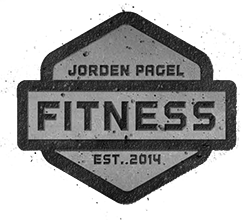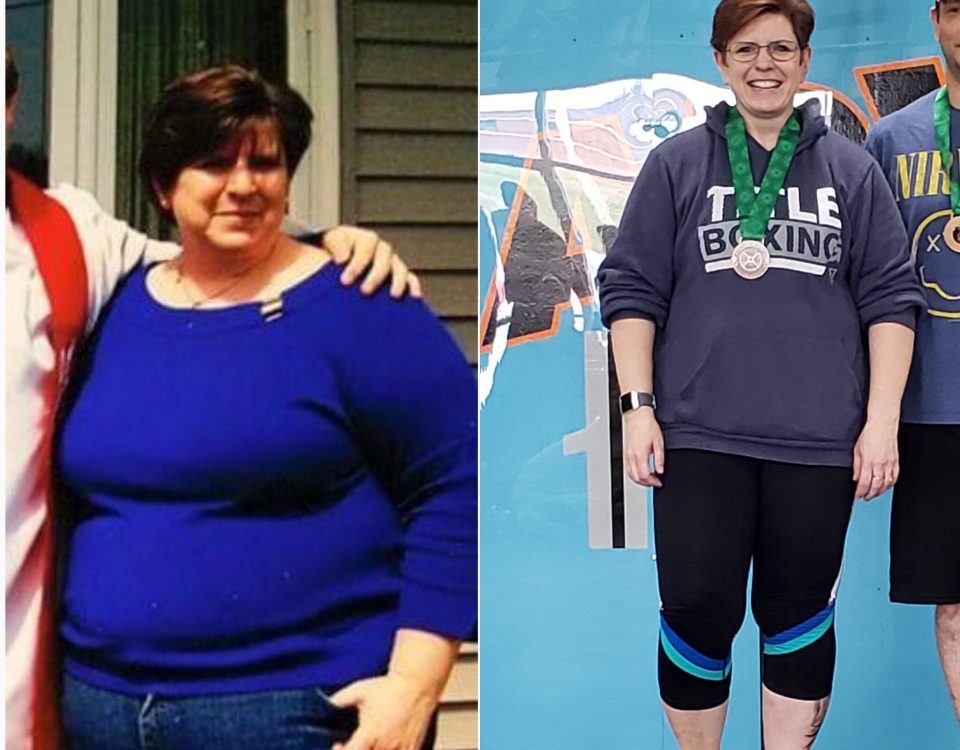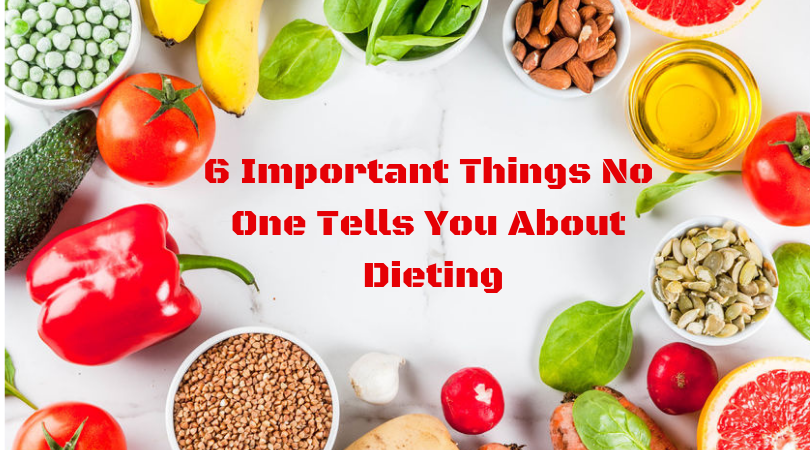The Ultimate Fat Loss Guide
Before we get into The Ultimate Fat Loss Guide, we need to clear something up.
It’s not “loose” fat, or “loose” weight.
It’s lose…LOSE.
L-O-S-E.
Loose is how your clothes fit after you lose fat.
I seriously don’t understand why this is so hard, but judging by the Internet, it is.
Sorry, but it needed to be said.
So now that we’ve cleared up that this article is about how to LOSE fat, let’s get to it…
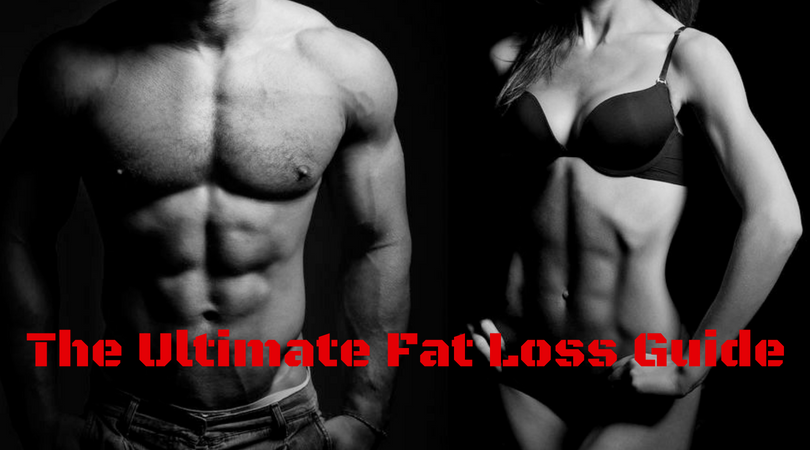
On the surface, fat loss seems simple. Eat less…get your butt up off the couch and move…easy enough, right?
And while at its core, fat loss really isn’t much more complicated than that, there are a lot of things that go into the “eat less, move more” equation.
If it were that simple, no one would be overweight or obese, and I’d have to find another career that would allow me to sit in coffee shops all day, sippin’ espressos.
The truth of the matter is, while the fat loss formula is not complicated, the execution of said formula, is. I struggled with it for close to two decades, the hundreds of clients I’ve worked with all struggled with it, and since you’re reading this, chances are you’ve struggled with it too.
So, what’s the deal?
Well, there are a lot of “deals;” mostly having to do with the ridiculously large amount of conflicting and just plain bad information out there about the “best” diets, “fat loss secrets,” or the “7 best exercises to a flat tummy.”
Those things are sexy. They give you hope by making you think there’s some secret method you haven’t heard about yet that’s going to finally be the thing you can stick to long enough to see the results you want.
But mostly those things are out there to sell you on something: a magazine, a program, a supplement…
The info in this article is not sexy. And it’s not a secret. It’s the same methods I’ve used myself and used with clients to help them lose, literally, thousands of pounds of fat. So if you’re looking for some secret method, or trick to help you “lose 21 pounds in 21 hours” or whatever it is, please leave.
However, if you’re looking for a tried and true method for losing fat that will help you get the body you’ve always dreamed of, read on…
The Benefits of Fat Loss
For a majority of us, our desire to lose fat initially starts with the desire to look better, feel more attractive, and be more confident in ourselves. Maybe you’re like me and want to get in shape for a girl, maybe you’re tired of being the “fat friend,” or maybe you just want to look better for yourself and be happy with what you see in the mirror each day.
That’s okay. There is nothing wrong with a little vanity. We live in the “look-at-me-and-how-good-I-look” world of Instagram and social media. There’s nothing wrong with wanting to look better; be it clothed, or my personal preference, naked.
But as far as benefits go, how you look is just the tip of the iceberg. Losing fat can help you transform your life in a number of ways, and is probably one of the best – if not THE best – preventative medical treatments out there for living a longer, healthier, disease-free life.
The benefits of fat loss include:
- Increasing testosterone levels in men with low T
- Managing insulin levels, which when chronically elevated, can lead to insulin sensitivity, putting us more at risk for weight gain, and possibly diabetes
- Sexual performance and confidence
- Lowering risk of disease, including high cholesterol, hypertension, cancer, cardiovascular disease, and breathing disorders such as asthma and sleep apnea
- Reducing risk of depression, and improving mood and self-confidence
So even if vanity doesn’t matter to you, the benefits to getting your ass in shape (literally) are almost endless.
But how? That’s the age-old question, isn’t it? What diet is best? How many hours should I exercise? What supplements?
The truth is, there are a lot of ways to skin the proverbial fat loss cat – or in this case, get the cat shredded. However, just because something works doesn’t mean you should do it.
I’ve seen people coming off trying every diet imaginable from paleo, to clean eating, to keto, to cleanses and detoxes, to things I still have no clue what the hell they are. And yet they’re still coming to me for help…why?
Because while all those diets may “work” they fail to take into account the single biggest factor when it comes to a successful fat loss plan: The person.
And so that’s what I’m going to show you how to do the rest of this article; how to create a fat loss plan that compliments your life, not controls it – based on my experience and the experience of my clients.
Buckle up. Let’s go…
The Ultimate Guide to Losing Copious Amounts of Body Fat
I. Diet
The saying “You can’t out-train a bad diet” may be cliché, but it’s also true. You can’t.
But what constitutes a “bad” or “good” diet? While this answer is highly individual, it all starts with calories.
And let’s make one thing very clear…this is not up for debate…you cannot lose fat if you’re not in a caloric deficit. Period.
 There’s plenty evidence to back this up. Study after study has shown that calories are the number one driver of weight loss/gain, and as long as your caloric intake is in-line with your goal, you will see progress.2,3
There’s plenty evidence to back this up. Study after study has shown that calories are the number one driver of weight loss/gain, and as long as your caloric intake is in-line with your goal, you will see progress.2,3
Probably the most famous example of this was Kansas State professor Mark Haub losing 27 pounds on a diet of Twinkies, junk food, and protein shakes. Even though the nutritional value of his diet was probably lower than dirt, he ate fewer calories than he burned, and thus lost weight.
Creating a Nutrition Plan
Calories are king, but many people are unaware of how to calculate their caloric intake and set it according to their goals. And while it’s not an exact science, there are formulas and calculators out there that will get you close, and you can adjust from there.
People believe counting calories is too hard, or they don’t know how to do it. But I’m here to tell you that 1). It’s not hard, and 2). It’s something that everyone can learn with a couple days of effort and practice. Are a few days of practice worth a lifetime of improved health?
Tracking Your Intake
Before you can count calories, you need to have a way of tracking your intake. Sure you could carry a pen and notebook with you everywhere, reading every food label, and adding up your calories…but this isn’t 1999. We have technology now.
The best way to track calories is by using an app like MyFitnessPal. Not only does this take nearly all the work out of tracking calories, but the food database is huge.
Additionally, studies have shown that the simple act of tracking your food intake subconsciously helps you consume fewer calories.1
It’s extremely easy to use and once you get into the habit of it, it takes less than five minutes a day to track your intake. And the payoff of tracking calories compared to not tracking is worth it to learn.
Finding Maintenance Calories
In order to set a deficit based on your goals, you first need to figure out how many calories you need on a daily basis. This is known as your caloric maintenance, or the number of calories you would need to eat to maintain your bodyweight.
The simplest, and still most effective way to do this, is to take your bodyweight and multiply it by 13-14. If you are a more active person you can use 14 and if you aren’t very active you can use 13.
So, as an example, let’s say you weigh 200 pounds as a fairly active person. Take 200 x 14, and you’ll get your daily maintenance level of 2,800 calories.
Now, in order to lose fat, you’re going to have to set a calorie deficit.
Setting a Caloric Deficit for Fat Loss
Your deficit is going to be largely dependent on how much fat you have, and how much you would like to lose. The more fat you have to lose, the larger your deficit can be.
The best way to set a deficit is to use percentages. By using percentages, your deficit is much more customized to your individual maintenance level. Here is what I would recommend for deficits:
Small: 15-20% below maintenance
Moderate: 20-25% below maintenance
Aggressive: >25% below maintenance
Unless you have a lot of body fat to lose, for a majority of the population a small or moderate deficit will probably work best. These will allow a decent rate of fat loss while still maintaining lean muscle mass and workout performance. These types of deficits are also easier to maintain and stick with.
Don’t get caught in the trap of thinking faster fat loss = better. This is exactly why crash diets don’t work. A slow and steady loss of about 1-2% of your bodyweight per week not only puts you at the least risk for a loss of muscle mass, but minimizes hunger, and makes your progress much more sustainable.
Macronutrients, Food Choices, and the 80/20 Rule
The calories you eat are made up of macronutrients – or protein, carbs, and fat. Each of these macronutrients plays a specific role in our bodies and a specific role in fat loss.
Protein = 4 calories per gram
Protein plays a huge role in our diet. The body needs protein to maintain, grow, and repair itself. Nearly everything in our bodies, our hair, skin, nails, muscles, organs, are all made up of protein. And these proteins are made up of amino acids.

There are 20 amino acids that the body needs to survive and function. Of those 20, 9 cannot be produced by the body, so we must get them from our food. These are known as essential amino acids. These amino acids are used to build and repair tissue, and are critical in Muscle Protein Synthesis (MPS). MPS is the process by which our body uses these amino acids to build and repair muscle tissue.
High protein diets have shown to be very effective for fat loss because of the effect protein has on satiety and energy expenditure. It takes the body more time and energy to digest a gram of protein than any other macronutrient. The longer the digestion process takes, the longer we feel satiated, or full. The body also burns more calories digesting protein, meaning the more protein you eat the more calories you burn.
Protein also affects certain hormones, specifically improving leptin sensitivity. Leptin helps regulate body fat levels and having poor sensitivity to leptin is one of the reasons people who are overweight tend to stay overweight. When leptin sensitivity increases the body goes to work by decreasing hunger and increasing energy expenditure.
Because of all this, protein is the priority of any fat loss diet. And in order to get all of the benefits above, it’s important to make sure you’re eating enough protein.
There are a ton of recommendations all over the Internet about how much protein you should eat. And the truth is, a lot of them are valid. However, to ensure we’re getting enough protein to maximize MPS, retain muscle, and stay as full as possible, 1 gram per pound of bodyweight is ideal.
So in our example above, if you weigh 200 pounds, you would aim to hit 200 grams of protein per day.
Fat = 9 calories per gram
For many years, fat was vilified and made out to be the reason for many health problems. The thought was that eating fat actually makes you fat. However, fat is an essential player when it comes to hormone production, especially testosterone. Fat is also responsible for regulating
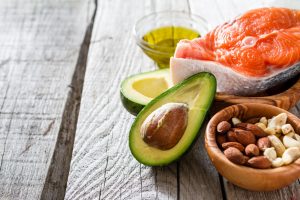
things like blood pressure, inflammation, vitamin absorption, and assists in brain function. So unless you have a very specific medical condition, eating a low-fat diet doesn’t really make sense, and will actually be detrimental to your health.
There are four different types of fats: monounsaturated, polyunsaturated, saturated, and trans fats. And with the exception of trans fats, each type of fat performs a specific function in the body.
Monounsaturated fat: These are fats that are found in things like avocados, walnuts, almonds, and cashews, as well as olive oil. Monounsaturated fats help lower bad cholesterol, raise good cholesterol and can help with fat loss.
Polyunsaturated fat: This is the type of fat that contains omega-3 and omega-6 fatty acids. These are fats that the body cannot produce but are essential to our health. Polyunsaturated fats can be found in things like salmon, fish oil, and seeds.
Saturated fats: Saturated fat is the reason that fats as a whole initially got a bad rap. There were a number of studies (flawed, biased studies) that linked saturated fat to heart disease. However recent research and longer-term studies have shown this to not be the case. Now, does this mean that everything you eat should be swimming in butter? No. It’s still probably a good idea to not go overboard with the consumption of saturated fats. But, they are not the villain they were made out to be, and neither need to be feared or avoided.
Trans fats: Trans fats are the exception to the fat rule. Trans fats are manufactured by taking normally healthy fats and infusing them with hydrogen atoms. This gives the fat a longer shelf life, but also makes it much worse for you. Trans fats are found in most fried foods, and while eating them every now and again won’t kill you, they are something you want to severely limit your consumption of.
For optimal health, aim to keep fat consumption between 20-30% of your total daily calories.
Carbs = 4 calories per gram
When it comes to fat loss, low-carb diets have been touted as the holy grail. Cut out carbs and BOOM, instant fat loss. But the problem is, carbohydrates actually provide our body with a ton of benefits.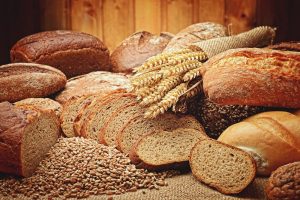
When broken down in the body, carbs are converted to glycogen and stored in the muscles, liver, and brain. These stores help fuel the muscles for physical activity and help aid in brain function. In fact, if you are regularly performing strength training activities then your body needs carbs that much more. Carbohydrates also play a role in hormone function, specifically thyroid regulation.
Not only that, but carbs are extremely difficult for our bodies to store as fat. Like, it is a physiologically difficult process for the body to convert carbs into stored body fat. Therefore, the only condition where carbs actually can make you fat is in a calorie surplus.
There are three types of carbohydrates:
Fibrous Carbs: Otherwise known as vegetables (heard of them?), fibrous carbs are the form of carbs you can really eat as much of as you want and not adversely affect your fat loss. These include foods like broccoli, spinach, cauliflower, peppers, cucumber, and zucchini, among others.
Because these veggies are so high in fiber, their calorie content is very low. This means that you can eat a lot…and I mean a lot…of these and you won’t be taking in that many calories. The high fiber content also means that they are digested much slower than other forms of carbs, meaning they will keep you fuller longer.
Simple Carbs: These are the type of carbs that are often referred to as “bad” because they come highly processed. They often come in the form of table sugar, white flour, and syrups…in other words, the stuff that makes up some of the tastiest foods out there.
Simple carbs are broken down by the body much faster than other forms of carbs, leading to spikes in insulin. And while insulin is actually good, helping shuttle nutrients to the muscles; chronically elevated levels of insulin will cause you to become insulin resistant. This means your body becomes less efficient at getting the food you eat where it needs to go and can lead to more fat storage.
So while limiting your consumption of ice cream, cake, cookies, bread, etc is a good idea, you don’t need to eliminate them completely. Any good diet plan will allow you to occasionally indulge in your favorite foods, just not every day.
Complex Carbs: These are carbohydrates that are less processed, meaning they are closer to their original form. They include foods like fruits, potatoes, rice, oats, etc. Unlike simple carbs, complex carbs are broken down much slower by the body, leading to fewer insulin spikes.
Another way to classify simple and complex carbs is by using the glycemic index. The GI scores foods by how much they raise blood sugar levels. Complex carbs typically score low on the GI, while simple carbs score high. Foods that fall in the middle are ones like whole wheat breads and pastas that are processed but still retain some of their original properties.
While it is probably a good idea that most of your carbs come from complex, lower GI sources, don’t think eating these exclusively is the key to fat loss. If you only need 2,000 calories a day but you’re eating 3,000, it doesn’t matter if it’s coming from cookies and beer or rice and bananas, you will not lose fat.
After you have protein taken care of, fill in the rest of your daily calories with a mix of carbs and fat; aiming to get higher carbs on training days, and higher fat on rest days.
Food Choices
When it comes to the food quality and sources, your best bet is going to be eating a diet high in whole, minimally processed foods, lean protein, healthy fats, starchy carbs, and high-fiber veggies. Here are some suggestions:
- Protein – Chicken or turkey breast, shrimp, fresh-water fish, lean cuts of beef like sirloin, flank steak, 90% lean ground beef, tuna, eggs and egg whites, greek yogurt, and protein powder.
- Fat – Cheeses, butter, olive or coconut oil, nuts, avocados, and whole milk.
- Carbs – Fruits, whole wheat grains, potatoes, sweet potatoes, brown or white rice, and high-fiber veggies like asparagus, broccoli, brussel sprouts, cauliflower, peppers, spinach, and tomatoes, just to name a few.
Note, this is not an all-inclusive list.
This also doesn’t mean, however, that all the foods you eat need to come from the list above. This is where the 80/20 rule comes in.
The 80/20 rule states that 80% of your calories should come from whole, minimally processed foods, while the rest can be from whatever you want, as long as you are hitting your calories.
By allowing yourself to enjoy the foods you love in moderation and take only a moderate calorie deficit, you greatly reduce cravings and binging. This also helps build the mindset that when you do slip up, it’s not that big of a deal and you can forgive yourself easier.
This also aids with long-term adherence, which is the key to reaching your goals. If you’re following a plan you can’t stick with, you’ll struggle to see results.
II. Exercise
The Real Purpose of Exercise
In the diet/exercise equation, diet is about 80% of the battle. Yes, exercise does help burn calories, but it’s not as much as people think. Relying on exercise to help you create a calorie deficit is inefficient. That’s why we use diet for that.
So then, what is the purpose of exercise you may ask?
Exercise has many benefits beyond burning calories, such as increased strength and bone density, cardiovascular health, flexibility and mobility, and positive hormonal effects, such as increased testosterone and growth hormone production.
There are numerous modes of exercise that can be used for fat loss. Let’s take a look at each one, their benefits, and a sample workout.
Strength Training
When we’re talking strength training, we’re not talking light weight/high reps. No, we’re talking about serious weight. Weight that is going to challenge you, maybe even scare you a little, but also will help preserve and grow muscle, and give you the best progress possible.

Strength training is great for fat loss because it helps the body maintain the lean muscle tissue that gives our body shape, and helps keep our metabolism elevated.
Sample Strength Workout
Instructions: Alternate Workout 1 and Workout 2, three times per week. So one week you will perform Workout 1 twice, and the next week you’ll perform Workout 2 twice.
Workout 1
A1) Barbell Squat 5×5, rest 2-3 minutes between sets
B1) Barbell Bench Press 5×5, rest 2-3 minutes between sets
C1) Bent-Over Barbell Row 5×5, rest 90 seconds between sets
Workout 2
A1) Barbell Squat 5×5, rest 2-3 minutes between sets
B1) Barbell Deadlift 3×5, rest 3 minutes between sets
C1) Barbell Overhead Press 5×5, rest 90 seconds between sets
Additionally, you can throw in some direct, isolation work each session, but this work should not take away or detract from your main strength exercises.
Metabolic Conditioning
There are many different forms of metabolic conditioning, or MetCon. One of the best forms is Escalating Density Training:
The goal of escalating density training (EDT) is to pack as much total work into your workout as possible. That work, or training density, is simple to measure with sets, reps, weight, and time. By packing as much training density into workouts as possible, you force your body to work harder, burn more calories, and shed more fat. In short, you get better results and get those results in less time.
Sample EDT Workout
This workout is a density workout. Your goal is to pack as much work as you can into timed circuits. Do as many rounds as possible in 4–6 minutes for each circuit. Rest ~60-90 secs between circuits. Complete one timed bout of each circuit. For the finisher, go back and forth between farmer’s walks and pull-ups until you reach your total reps for pull-ups.
Circuit A:
Complete as many rounds of the following before time expires. Rest as much as you have to, but only as much as you need.
A1. Squats (BB or Goblet) x 10
A2. Ab wheels x 8
A3. Push-ups x 10
——— Rest ~60–90 seconds. ———
Circuit B:
Complete as many rounds of the following before time expires. Rest as much as you have to, but only as much as you need.
B1. Barbell glute bridge x 12
B2. Mountain climbers x 25 (on each side)
——— Rest ~60–90 seconds. ———
Circuit C:
Complete as many rounds of the following before time expires. Rest as much as you have to, but only as much as you need.
C1. DB row x 8
C2. Bear crawl x ~10 yards forward and back
C3. DB reverse lunge x 10 (on each side)
——— Rest ~60–90 seconds. ———
Finisher:
Alternate between D1 and D2 with minimal rest. Do as many sets as needed to hit 40 total reps of pull-ups. Break up sets as needed.
D1. Farmer’s Walks to failure
D2. Pull-ups x 40 total reps
Cardio
Now, I’ll be the first to admit, I am not a fan of cardio. And if you’re not either, that’s okay. Truth is, you do not need to do cardio to lose fat. But the truth also is, cardio can help; particularly HIIT and LISS.
HIIT – or High-Intensity Interval Training – is simply short bursts of near-maximal activity or work; followed by longer bouts of lower intensity activity or rest.
Typically with HIIT, the work-to-rest ratio is at least 1:1, but more often 1:2; meaning that if you have 30 seconds of work, you’ll rest for 30-60 seconds.
If you’re doing it correctly, you really shouldn’t be able to go longer than 10-15 minutes like this.
Here’s a sample HIIT workout:
Treadmill or Bike Sprints
5-minute warm-up at moderate intensity
Sprint all out for 30 seconds
Low-intensity or rest for 60 seconds
Repeat for 10-15 minutes.
Done
On the other hand, LISS – or Low-Intensity Steady State cardio – is any activity done at less than 40% max effort. The goal here isn’t so much burning extra calories – although that is a small byproduct – but rather promote better blood flow and recovery, reduce inflammation, and reduce cortisol levels.
20-30 minutes a couple times per week is more than enough. Even better if you can get outside and walk.
III. Tips and Recommendations
We’ve covered a lot so far, and you may be a bit overwhelmed, so below is a list of quick, and actionable tips you can use every day to help you get started on your fat loss journey.
Buy a food scale: You’re horrible at estimating food portion size. So am I. We all are. Even if you have a lot of practice, it’s extremely easy to get lazy. Weighing your food will take all the guesswork out.
Skip breakfast: The idea that breakfast is the most important meal of the day is a myth. Instead, try Intermittent Fasting (IF). IF is the method of restricting the amount of time each day where you eat. So, instead of eating first thing in the morning, push your first meal of the day back until 11, or 12. By restricting the amount of time you spend eating each day, you will naturally restrict your calorie intake as well.
Veggies and protein at every meal: High-fiber veggies and protein are the most satiating foods out there, meaning they take longer to digest than anything else. This will help keep you fuller, longer, leading to less hunger and less snacking.
Drink more water: I think we hear this one enough, but it bears repeating. Often times feelings of hunger are our body’s way of telling us we need something, but not necessarily food. Many times its dehydration. Drinking more water will help combat feelings of hunger and keep you hydrated. Not only that, but being well-hydrated lubricates joints, reduces inflammation, and increases the mobilization of fatty acids.
Cook more meals at home: When you cook at home, you get to control what’s in your food. That’s not really the case when eating out. If you don’t have time to cook every night of the week, take one day and prepare your meals for the entire week to save you time.
Track your training: Like with nutrition, tracking your training and exercise is critical. It’s very difficult to remember from one workout to the next how many sets, reps, weight, time, etc, you performed.
Pack your gym bag the night before: If you’re one of those people who have trouble getting yourself to the gym, pack your gym back the night before and take it with you when you leave for work. This allows you to go straight to the gym after work, instead of going home.
Get more sleep: This is a great recommendation in general, but if fat loss is your goal, sleep needs to be a priority. Not only does being under-slept hurt your fat loss progress, but it can also cause you to lose muscle mass easier as well. Aim for 7-8 hours of sleep per night.
De-stress: Stress is a huge hindrance to fat loss. High stress causes elevated levels of the hormone cortisol. Cortisol, when present for too long, can make losing fat very, very difficult. The best way to combat stress is get more sleep, and do things that help relax you, like reading, meditating, going for walks, sex, etc.
Hire a coach (Shameless plug for my Elite One-On-One Coaching program): Seriously though, if you’re struggling to lose fat, one of the best things you can do is hire a coach. And I say that from my own personal experience.
The benefit of having a coach isn’t so much about setting a nutrition or training plan. Yes, you do get advanced customization to your goals and your lifestyle, but everything I explained above can get you where you want to go if you’re diligent and consistent. But that’s the problem that most of us have: our consistency. And that’s because we lack accountability.
It’s this lack of accountability that’s often what keeps us from reaching our goals. When it’s just us holding ourselves accountable, we often let things slide that, ironically, we wouldn’t let slide from others. We make excuses, cut corners, and often end up sabotaging ourselves.
However, when we’re accountable to someone else, like a coach, it’s in our nature to try harder: because we instinctively don’t want to let people down. Not only that but by putting something on the line – in this case, money – we automatically place more value on it. And when we have to give up something of value to get something in return, we’re much more likely to not only see it through, but work harder for it.
IV. Supplements
First, know that no supplements are necessary for fat loss. A good training and nutrition program will do that for you without ever taking a single supplement.

Where supplements do come in handy however is the convenience, and filling in any nutritional gaps that you may have in your diet. Yes, sometimes it is easier to drink a shake instead of eating another chicken breast, or popping a vitamin to ensure you’re getting enough micronutrients. But again, it’s not necessary.
Here are some supplements that can help you on your weight loss journey:
Greens supplement – A good greens supplement can give you all the benefits of a multivitamin, and more. I recommend Athletic Greens to all my clients, because it’s awesome. Just one serving contains the nutrient equivalent to 10 servings of fruits and vegetables. It also contains probiotics and enzymes to help with gut health and digestion. And, despite any preconceived notions you may have about a greens drink, it actually tastes really good.
Protein Powder – Like we’ve talked, protein is a very important part of your diet if you want to lose fat and build muscle. But sometimes it can be difficult to eat the amount of protein necessary from whole food sources. This is where adding a protein shake or two each day can come in handy.
Creatine – Creatine works by providing the body with extra energy when it needs it. While glucose is the body’s preferred source of energy, it takes a little while for your body to turn it into usable energy. This is where creatine jumps in and provides your body the energy when it needs it fast (think your first few reps of a lift, sprints, or other short, high intensity bursts of activity).
Creatine has also been shown to improve aerobic performance, increase bone density, and improve cognitive function. For an extremely detailed breakdown on creatine, check out this article on Examine.com.
Vitamin D3 – Vitamin D3 isn’t found naturally in most foods. You can get what you need from direct sunlight, but if you’re like me and live in a place void of quality sunlight almost half the year, supplementing with D3 is a good idea.
Vitamin D may be one of the most important supplements you can take to ward off a wide range of physical, emotional, and neurological issues, including:
- Reduce the risk of Type 1 & 2 diabetes
- Maintain healthy bones and prevent osteoporosis
- Fight off Alzhiemers and other neuro-degenerative diseases
- Increase immune system
- Allieviate depression and fatigue
- Reduce the risk of breast, prostate, and colon cancers
- Support hormone function and boost fertility, including helping maintain healthy testosterone levels
Omega-3 Fish Oil – Omega 3’s, and their counterpart Omega 6’s, are called essential fatty acids, which means the body needs them to function properly. Our bodies however, cannot produce them, themselves, so we must get them from our diet.
A diet high in Omega-6 fats leads to higher levels of inflammation in the body. And while some inflammation is necessary to protect the body from injury, excess inflammation has been linked to some of the most serious diseases human beings face, such as heart disease, diabetes, Alzheimers, and many forms of cancer.
On the other side, Omega-3’s are anti-inflammatory. Omega-3’s are made up of eicosapentaenoic acid (EPA) and docosahexaenoic acid (DHA). A diet with an Omega-3 to Omega-6 ratio of 1:1 leads to healthier blood vessels, lower risks of diseases, and reduce blood triglycerides associated with heart disease.
Go Forth, and Shred Fat
On the surface, fat loss is simple, but it’s not easy. It takes hard work, and consistency…and don’t let anyone tell you differently. As much as we want or wish there to be, there are no tricks or secrets. Fat loss takes work and ruthless consistency.
BUT, if you’re ready to make the change, put in the work – consistently – and follow the plan above (maybe with a little help) you will get where you want to go.
Want an even more detailed, step-by-step guide for creating your own fat loss plan? Sign-up for my free 5-Day Fat Loss course, and get everything you need to finally lose fat, forever, delivered right to your inbox.
- Burke LE, Wang J, Sevick MA. Self-monitoring in weight loss: a systematic review of the literature. J Am Diet Assoc. 2011;111(1):92–102. doi:10.1016/j.jada.2010.10.008.
- Schoeller DA. The energy balance equation: looking back and looking forward are two very different views. Nutr Rev. 2009;67(5):249–254. doi:10.1111/j.1753-4887.2009.00197.x.
- Buchholz AC, Schoeller DA. Is a calorie a calorie? Am J Clin Nutr. 2004;79(5):899S–906S. Available at: http://eutils.ncbi.nlm.nih.gov/entrez/eutils/elink.fcgi?dbfrom=pubmed&id=15113737&retmode=ref&cmd=prlinks.
